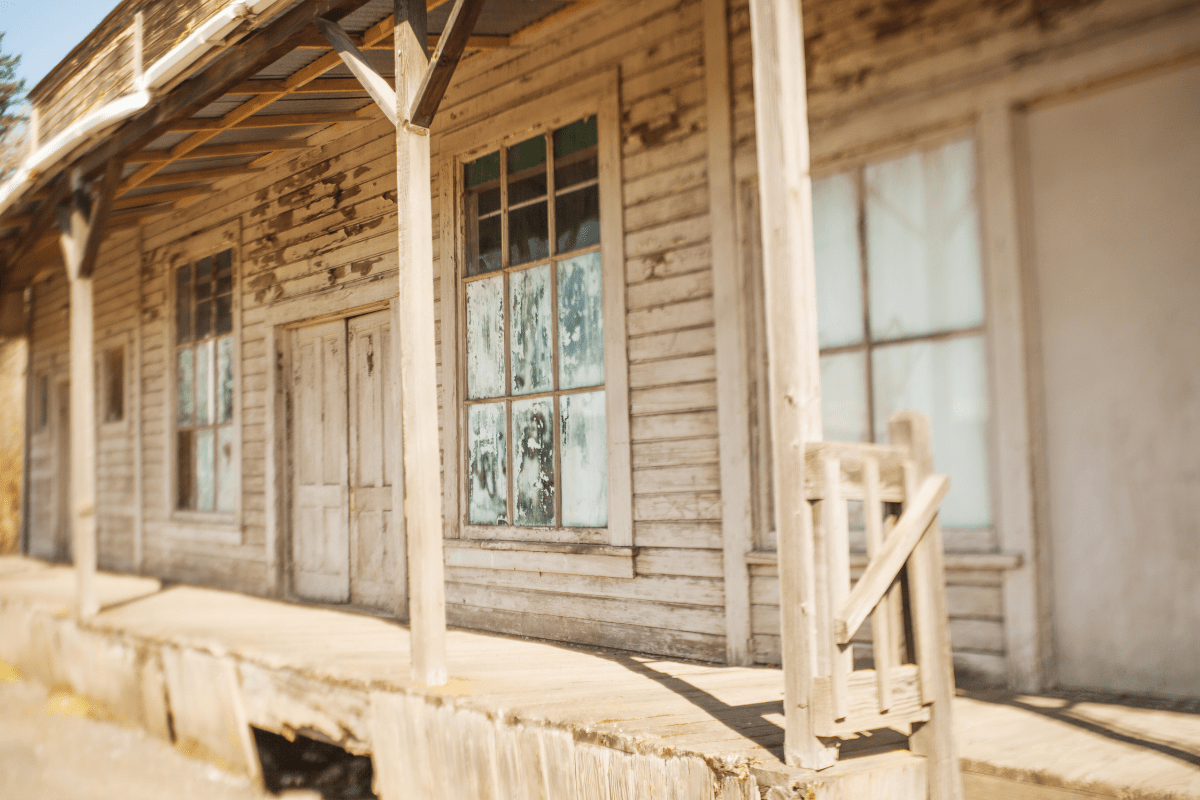When you think "epic kayaking destinations," Oklahoma probably isn't the first place that pops into your head. But here's the thing: the Sooner State is hiding over 1 million acres of paddleable water, which is basically nature's way of saying "surprise!" With more shoreline than the Atlantic and Gulf coasts combined (seriously, 55,646 miles worth), Oklahoma might just be the Midwest's best-kept paddling secret.
The Illinois River: Where everyone starts (for good reason)
The Illinois River is Oklahoma's paddling sweetheart, and once you've floated its crystal-clear waters through the Cookson Hills, you'll understand why locals guard this gem like a family recipe. This spring-fed beauty stretches over 60 miles through northeastern Cherokee County, serving up Class II rapids that won't terrify your nervous friend who "doesn't really do water sports."
The magic happens between Tahlequah and Watts, where the river maintains that perfect Goldilocks flow—not too wild, not too tame. According to the USGS gauge station near Tahlequah (station 07196500 for you data nerds), the sweet spot sits between 200-800 cubic feet per second. When levels creep above 9.5 feet, even the local daredevils start heading home.
Finding your launch spot
The Illinois River spoils paddlers with 15 free access points, each with its own personality quirks.
Round Hollow Public Access wins the popularity contest with its massive gravel bars—perfect for that obligatory group photo where someone always blinks. Edmondson brings swimming holes and actual picnic tables (not just sad concrete slabs), while Todd throws in rope swings for those Instagram moments you'll probably regret attempting. Want something more technical? The WOKA Whitewater Park near Watts recently added eight engineered drops over 1,200 feet, because apparently regular nature wasn't challenging enough.
Wildlife enthusiasts, pack your binoculars—the river hosts over 250 bird species, including bald eagles who judge your paddling form from above. Pro tip: if you spot one, resist the urge to salute. They don't care about your patriotism, and you'll probably tip over.
Mountain lakes that make you forget you're in Oklahoma
Oklahoma's lake game is surprisingly strong, starting with Lake Texoma's whopping 88,000 acres straddling the Oklahoma-Texas border. With 580 miles of shoreline, this behemoth offers everything from protected beginner coves near Eisenhower State Park to rocky challenges near Denison Dam that'll test your "I totally know what I'm doing" facade.
But if you want water so clear you can count your toes (and judge your pedicure choices), head southeast to Broken Bow Lake. This 14,000-acre stunner nestled in the Ouachita Mountains boasts the clearest water in the region and 180 miles of forested shoreline. Launch from Beavers Bend State Park or Stevens Gap, and prepare for the kind of scenery that makes you annoyingly philosophical about "reconnecting with nature."
The local favorites nobody talks about
Grand Lake O' The Cherokees sprawls across 46,500 acres with 1,300 miles of shoreline featuring dramatic bluffs and rock formations that look like nature's sculpture garden. Fair warning: summer weekends bring enough motorboats to recreate the D-Day invasion, so aim for early morning or evening paddles when the water actually remembers it's supposed to be peaceful.
For a more refined experience (yes, kayaking can be bougie), Lake Murray near Ardmore offers 5,728 acres of water with the historic Tucker Tower standing guard like a medieval castle that got lost in Oklahoma. The Murray Harbor Marina even offers "boutique" kayak rentals, because apparently your kayak needs to be fashionable too.
Hidden gems worth the hunt:
- Lake Bixhoma near Jenks (ghost-town quiet)
- Robbers Cave State Park Lake (mountain views included)
- Lake Thunderbird's 6,070 acres (convenience without crowds)
- Lake Wister (fishing paradise)
- Greenleaf Lake (photography gold mine)
Urban paddling: Because driving two hours isn't always an option
Oklahoma City figured out that not everyone wants to make paddling a whole production, so they made it easy. Lake Hefner and Lake Overholser require just a $6.25 daily permit—less than your fancy coffee drink that you'll definitely spill in the kayak anyway.
Lake Hefner's 2,500 acres provide a quick escape for lunch-break paddlers (we won't tell your boss), while Lake Overholser connects to the Stinchcomb Wildlife Refuge, opening up 1,000 acres of wetlands where you can pretend you're on a National Geographic expedition instead of five miles from a Target.
The rental reality check (and what it'll actually cost you)
Let's talk money, because "affordable family fun" is usually code for "prepare to empty your wallet."
Illinois River outfitters
The Illinois River corridor hosts more outfitters than a country music festival has cowboy hats. Illinois River Outfitters charges $32 per person for their long trips (4-8 hours), with military discounts because they appreciate people who've paddled in much scarier waters. Dogs cost an extra $15, which seems fair since they contribute zero paddle power but maximum chaos.
Peyton's Place Resort, the river's grandaddy outfitter, runs $33 for their 6-mile trips with a sweet Monday-Friday discount that'll save you a whole five bucks (hey, that's a gas station burrito right there). Most packages include shuttles, life jackets, and paddles, though they draw the line at sunscreen and snacks—you're on your own there, sunshine.
Breaking down the Broken Bow prices
Down in Broken Bow territory, Ambush Adventures keeps pricing simple enough for those of us who peaked at high school math. Their sliding scale runs from $25 for a 4-mile float (perfect for "I'm not really outdoorsy" friends) to $35 for the 9-mile marathon that'll have you discovering muscles you forgot existed. Bringing your own kayak? That'll be $20 for the shuttle, because gas isn't free and neither is listening to your "helpful" loading advice.
City slicker options
Urban paddlers can hit up OKC Kayak for recreational singles at $50 per day, though their definition of "day" is adorably generous—pick up Thursday, return Friday, call it a day. Their fishing and touring kayaks run $75 daily for those who take their floating seriously.
RIVERSPORT OKC in the Boathouse District offers the Goldilocks approach: $19 hourly for commitment-phobes or $39 all-day passes for the properly ambitious. They've got both flatwater and whitewater options, because sometimes you want zen, and sometimes you want controlled chaos.
The permit puzzle (and other bureaucratic adventures)
Nothing says "spontaneous outdoor adventure" like paperwork, but here we are.
State parks will ding you $10 per vehicle for day use ($8 if you're an Oklahoman, because home field advantage). Annual passes run $75, or $60 for residents who can prove they voluntarily choose to live here. The good news? Oklahoma residents over 62 and honorably discharged veterans get in free, which is the state's way of saying "thanks for your service/surviving this long."
Here's what else you need to know:
- Kids 12 and under must wear life jackets (no negotiation)
- Adults just need one aboard (optimistic, aren't we?)
- Municipal permits for OKC lakes: $6.25 daily
- Annual city pass: $33 (math says 6+ trips)
- Non-motorized kayaks: No state registration needed
- Dogs: Usually welcome but check first
- Alcohol: Depends on location (research accordingly)
- Glover River: Special WMA permit required
When to paddle (and when to stay home)
Oklahoma weather has commitment issues, but there's a method to its madness.
Peak paddling season runs June through September, when the weather finally decides to cooperate and water levels stabilize. Spring brings the highest water levels thanks to rain that seems personally offended by your outdoor plans. May carries the highest tornado risk, because Oklahoma likes to keep things spicy. By July, temperatures can crack 100°F, turning afternoon paddles into involuntary sweat lodge experiences.
The seasonal breakdown that actually helps
Fall might be the secret winner here. September through November delivers 70-80°F temperatures, reduced storm drama, and foliage that'll have you composing poetry you'll definitely never share. Winter paddling is possible but requires embracing your inner Viking—water temps drop to the 40s, and hypothermia isn't a good look on anyone.
Monitor conditions through the USGS gauge network with 130+ stations statewide. The Illinois River typically flows around 3,010 CFS at safe levels, while Mountain Fork River's personality changes dramatically based on dam releases. Learn to read these numbers—under 100 CFS means rock-scraping frustration, over 1,000 CFS means maybe reconsider your life choices.
Wildlife encounters and other "character-building" experiences
Let's address the elephant (or cottonmouth) in the room. Yes, Oklahoma has venomous water snakes—specifically the northern cottonmouth, which sounds like a craft cocktail but definitely isn't. These thick-bodied drama queens flash their white mouths when threatened, earning their cotton-mouth name and usually convincing paddlers to find a different hobby.
The southeast corner near McCurtain County technically has alligators, though attacks remain rarer than finding a parking spot at Walmart on Black Friday. More realistic hazards include strainers (fallen trees that create water traps), low-head dams with washing-machine hydraulics, and sudden thunderstorms that transform creeks into raging torrents faster than you can say "maybe we should've checked the forecast."
Cell coverage plays hide-and-seek in remote areas, so share your float plan with someone who'll actually notice if you don't return. "Going kayaking somewhere" doesn't count as a float plan, Karen.
RIVERSPORT OKC: Where Olympics dreams meet reality checks
RIVERSPORT OKC isn't messing around. This facility claims the title of world's only venue combining Olympic slalom and sprint disciplines in an urban setting, which is fancy talk for "prepare to be humbled by 12-year-olds who paddle better than you."
The venue features Class II-IV artificial rapids across two channels (1,000 and 1,300 feet), plus a surfable whitewater wave that'll make you question your balance, coordination, and life choices simultaneously. As an official Olympic and Paralympic Training Site, it's hosting the 2026 ICF Canoe Slalom World Championships—North America's first in over a decade.
Events worth marking your calendar for
The Oklahoma Regatta Festival (October 3-5, 2025) transforms the Oklahoma River into aquatic Coachella, minus the flower crowns. The OG&E NightSprints feature 500-meter races under lights, because everything's more dramatic with artificial illumination.
PaddleMania on July 19, 2025, embraces the ridiculous with a $30 flat fee covering Build Your Own Boat races (duct tape encouraged), raft tug-of-war, and the "Hold My Beer" roll challenge, which is exactly as questionable as it sounds.
Multi-day trips for the properly ambitious
The Illinois River's full 60-mile journey typically takes 2-3 days, assuming you don't get distracted by every swimming hole and rope swing (you will).
Camping options range from "rustic" (translation: no toilet paper provided) to "glamping-adjacent." War Eagle Resort, voted "Best Resort" four times by people who apparently vote on such things, offers a solid basecamp. Arrowhead Resort and Eagle Bluff Resort provide alternatives for those who prefer their nature with a side of amenities. Primitive camping runs about $20 nightly for those who think suffering builds character, while cabins start at $190 with mandatory two-night weekend minimums because capitalism.
The Mountain Fork River below Broken Bow Dam serves up 28 miles of Class I-II rapids that occasionally throw tantrums reaching Class IV during dam releases. Presbyterian Falls offers a 3-4 foot drop that sounds innocent until you're staring down it wondering why it's named after a denomination known for being reasonable.
The Glover River, Oklahoma's last major free-flowing river, demands self-sufficiency across 33.2 miles of wilderness. No commercial outfitters operate here—it's just you, your gear, and the kind of solitude that makes you realize how much you talk to yourself.
The paddlefish situation (yes, that's a thing)
Grand Lake hosts prehistoric paddlefish that can reach 200 pounds and 60 years old, making them older than your dad jokes and significantly heavier. These living fossils look like someone started designing a shark, got distracted, and attached a tennis racket to its face. Guided expeditions let you paddle among these ancient weirdos, though catching them requires special permits and more patience than teaching your parents to use smartphones.
Final wisdom from someone who's flipped a kayak or two
Oklahoma's paddling scene hits different than coastal destinations or mountain rivers—it's approachable without being boring, challenging without requiring a death wish, and surprisingly beautiful without the crowds that plague Instagram-famous spots.
Whether you're seeking RIVERSPORT's Olympic-caliber challenges, the Illinois River's friendly rapids, Broken Bow's crystal clarity, or Lake Texoma's vast expanses, Oklahoma delivers adventures that'll have you wondering why you ever doubted a landlocked state's water game. Pack sunscreen (more than you think you need), bring snacks (hangry paddling is dangerous paddling), and prepare for the inevitable moment when you realize Oklahoma's been holding out on us all along.
Just remember: the water's fine, the views are better than expected, and yes, you should probably wear that life jacket even if it makes you look like a fluorescent marshmallow. Your Instagram followers will survive the fashion crisis, and more importantly, so will you.





